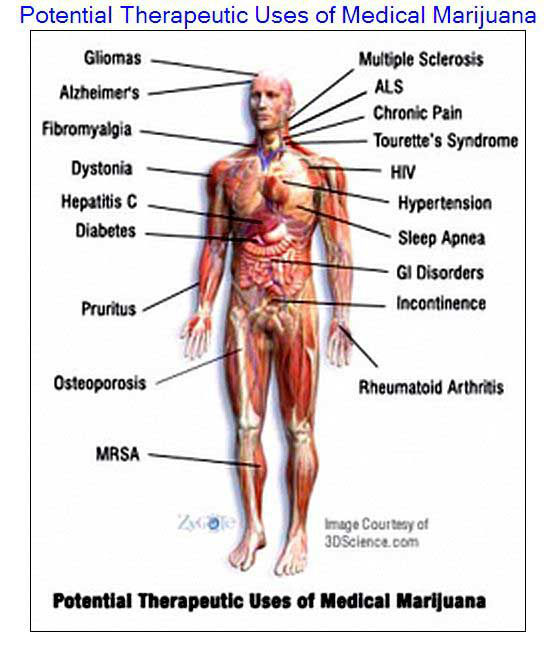Add another dime. CBD regrows, not just protects,
Post# of 36729
Your Brain on CBD: Neurogenesis and Brain Growth
by Don Fitch
July 27, 2013
We rightfully mourn the loss of brain cells, neurons, as we age. As they die we lose memories and capabilities – even our personalities. We are only as robust as our brains, composed mainly of neurons. Formerly, it was thought the as adults we already have all the brain cells we will ever have, and the path was only downward as we lose neurons to stress, alcohol and aging. Happily, this bleak picture was changed when neuroscientists discovered that, under certain conditions, even adult brains can grow new neurons, i.e., neurogenesis. New neurons refresh and rejuvenate, and lift mood.
The principal area where neurogenesis can take place is in the hippocampus, a dual area deep within the brain. Although small, hippocampal health appears important to memory and brain organization. It can be damaged. Excess alcohol and many drugs can cause it to lose neurons and shrink, resulting in fading memories and depression.
Our body produces endocannabinoids that activate our endocannabinoid regulatory systems, principally anandamide and 2-AG. Phytocannabinoids come from the plant cannabis sativa, aka marijuana. THC is the best known and produces the psychoactive and some of the medicinal effects of cannabis.
A Canadian research group reported that cannabinoids promote embryonic and adult hippocampus neurogenesis and produce anxiolytic- and antidepressant-like effects. This research used a synthetic cannabinoid to activate the same CB1 receptors activated by the plant cannabinoid THC. They attributed the anxiety-relieving and depression-lifting effects of long-term treatment were “likely via promotion of hippocampal neurogenesis.”
Another new study has shown that the cannabinoid CBD from cannabis also promotes neurogenesis. Researchers from the Complutense University in Madrid, along with Brazilian researchers found that CBD relieved stress in mice and it did so by increasing neurogenesis in the hippocampus. They concluded, the “anxiolytic effect of cannabidiol on chronically stressed mice depends on hippocampal neurogenesis: involvement of the endocannabinoid system.”
CBD, cannabidiol is an exceedingly interesting molecule, brimming with beneficial health effects. It is one of over 60 cannabinoids produced by the hemp plant Cannabis sativa. Unlike the better known THC, CBD is not psychoactive, although it may modulate the effects of THC. Both cannabinoid molecules interact, in different ways, with our cannabinoid receptors CB1 and CB2. The medical potential of CBD has been inadequately studied because of the idiotic illegality of cannabis sativa. Even so, the known health effects are impressive: Like THC, CBD is an antioxidant with neuroprotective properties. Like THC, CBD is anti-inflammatory. It relieves pain. CBD has anti-tumor properties.
So on top of all these medical benefits, CBD may well contribute to neurogenesis, brain rejuvenation and growth. Well, the DEA does not like these medical benefits and does not allow research on them because it likes the draconian Schedule I – no medical benefits – of cannabis to extend the lucrative war on drugs. This bureaucratic turf battle keeps the DEA in the dough but denies Americans the health-giving, even life-saving benefits of medical cannabis, even non-psychoactive CBD-dominant strains.
Americans should demand access to natural plant molecules such as CBD, along with THC, THCV and dozens of other medical cannabinoids. CBD and these other cannabinoids can help prevent many maladies, can treat dozens of diseases and can provide palliative comfort to the rest. Along with refreshing and growing our very brains with neurogenesis. If Americans gain their medical freedom with a down-grading of cannabis from ridiculous Schedule I tyranny, the planet’s other six billion people would also gain greater access. Study of this remarkable plant cannabinoid would blossom world-wide as anti-cannabis doctrine crumbles in the face of huge medical and health benefits.
This is not a complete list but illustrates some potential therapeutic uses.

 (0)
(0) (0)
(0)